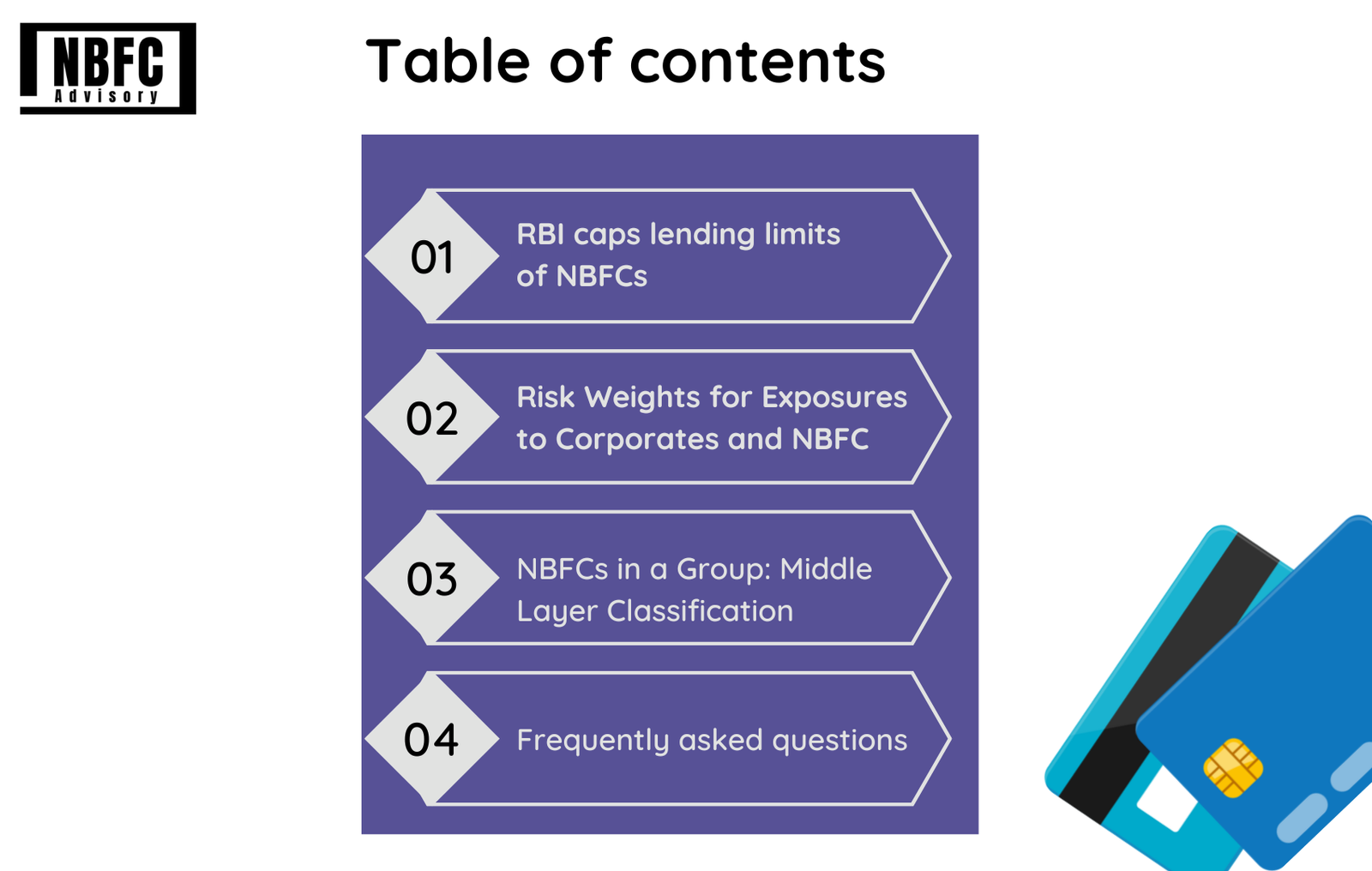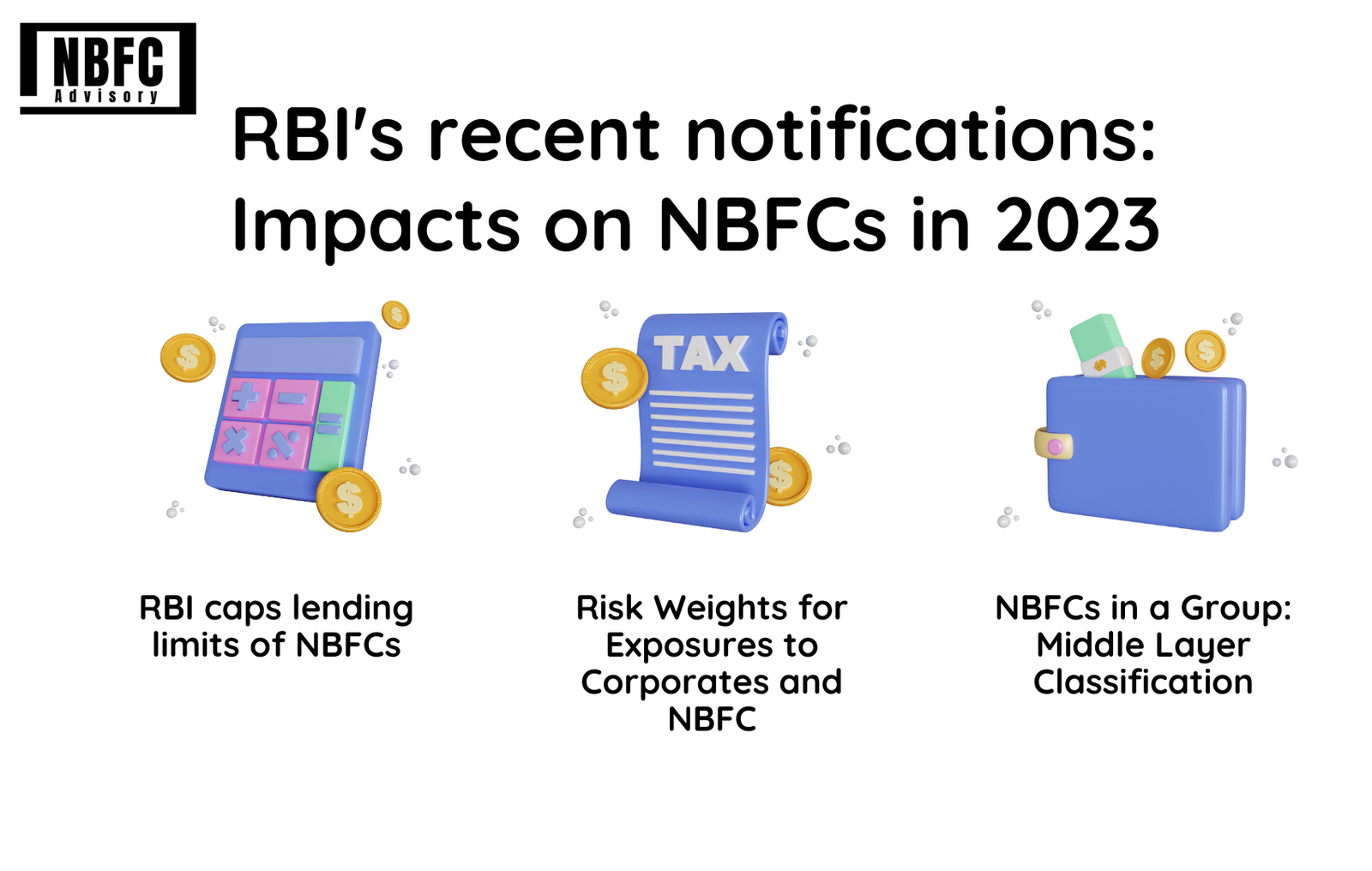Inside This Article
Introduction
As we know, NBFCs are performing an imensive job by providing credit facilities to specific niche sectors, viz., infrastructure and unbanked sections of the economy — thus, driving financial inclusion in India.
And the sector has reported a total annual growth of almost 18% over the previous few years and is expected to maintain it in the coming years.
However, famous for their superior understanding of regional needs, robust financial solutions, and personalized offering – NBFCs are not untouched by rigorous changes, whether they’re market-influenced or by regulatory bodies like RBI.
So, this blog will cover important recent RBI notifications that can shape NBFC’s future and core developments like lower transaction costs, quick decision-making, customer acquisition, and provocative provision of services in 2023!
Let’s dive in!

3 RBI latest notifications for NBFCs – their Outcomes and Effects on functionality

1. RBI caps lending limits of NBFCs – applicable from 1 OCT
In the recent master circular, the RBI mentioned that the acceptable exposure of an NBFC, in line with commercial banks, should not cross 20 percent of its capital base for an alone entity. However, an extra 5 percent is allowed if the board agrees. (This regulation is live from October 1, 2022).
As for NBFC entity-connected groups, the total exposure is forbidden to exceed above 25 percent of its capital base. Furthermore, the cap is at 35 percent, which is only for infrastructure finance companies.
And the above rules will apply to middle-layer NBFCs (with assets amount of Rs 1,000 crore or more, including deposit-taking and non-deposit-taking ones) and upper-layer NBFCs (RBI are yet to identify them) thus, not including base or top layers NBFCs.
Going like this, for the case if limits are breached, the following NBFC will have to inform the supervision department of RBI. After it, it may be sanctioned to undertake any new exposure, including all entity and group levels. Moreover, some additional penalties and fines have to be addressed by lawbreakers in a few scenarios.
2. Risk Weights for Exposures to Corporates and NBFC (10 OCT)
The other recent circular by RBI regarding Risk Weights for Exposures to Corporates and NBFCs, (effective from 31 March 2023) was focused on Press Releases issued by ECAIs (External Credit Assessment Institutions) on rating actions — and mentioned ratings are often lacking the lenders’ details.
Also, it mentioned the results of these conditions, if not fulfilled – might be banks pertaining the risk weights for unrated exposures or not adhering to the specified condition for risk management, which will eventually lead to the lower capital provision and under-quoting of the risks.
For this reason, the RBI advised the ECAIs vide letter dated June 4, 2021, to mention the banks’ names and the corresponding credit facilities in the PRs issued by August 31, 2021, after obtaining consent from the borrowers on rating action. However, owing to a lack of consent from borrowers, only a few reports from ECAIs were appeared.
Therefore, it is guided that without the above disclosure, a bank loan rating shall not be entitled to be reckoned for capital computation.
If ECAI does not make the mentioned disclosure, none of the banks shall deem the said rating and, therefore, must appeal risk weights of 100 percent or 150 percent as applicable in terms of further guidelines.
3. NBFCs in a Group: Middle Layer Classification (11 OCT)
With this notification, RBI mentioned that NBFCs that are part of a joint Group or have a common set of promoters would not be viewed on a standalone basis any longer.
Being that said, it is now necessary that the total assets of all the group NBFCs shall be merged to determine their applicability for Middle Layer classification. (Effective from October 01, 2022).
Suppose the consolidated asset size of all the NBFCs in the group is ₹1000 crore and above. In that case, each (NBFC-ICC), (NBFC-MFI), and (NBFC-MGC) included will be classified as an NBFC in the Middle Layer, so the regulations as applicable to the Middle Layer shall be applicable to them as well.
Other mandates to follow: Statutory auditors must certify the asset size (as of March 31) of all the NBFCs in the group every year. The certificate shall be provided to the Department of Supervision of the RBI, under whose authority the NBFCs are registered. And these provisions shall not be applicable to an upper-layer NBFC.
This notification came into force – as it is believed to help the RBI to bring transparency in reporting groups of NBFCs and enhance public trust in them.
FAQs
1. What is the minimum percentage of appropriate capital ratio to be maintained by NBFC?
According to RBI regulations, Systemically Important NBFCs are required to maintain 15% capital against their risk-weighted assets. This 15% capital involves two types of capital: Tier-1 Capital (Minimum of 10%) and Tier-2 Capital (Not more than Tier 1).
2. What are risk-weighted assets as per NBFCs?
Risk-Weighted Assets are equal to the minimum capital amount that an NBFC must keep to itself in case an unexpected loss arises out of the intrinsic risk of its assets and avoid bankruptcy.
3. What are middle-layer NBFCs?
Middle Layer, or NBFC-ML, are non-deposit-taking NBFCs with an asset size of more than 1000 crores. However, suppose the consolidation of assets of all the NBFCs in the Group turns out to be higher than the asset size threshold of ₹1000 crore. In that case, it will not be considered on a standalone basis and should be classified in the Middle Layer criteria.
4. Does RBI regulate all financial institutions?
No. RBI only governs deposit-accepting financial institutes, banks, and NBFCs and is part of the same services they offer.
How we can help!
All of the above notifications will revolutionize the NBFC sector immensely. Time and again, RBI will come with such notices. It depends on how the market reacts to it and takes action.
So instead of worrying about new terms and how your business will survive through. Leave this to our experts!
We at NBFC Advisory, with 15+ years of experience in advisory and counseling – whenever you feel stuck and hanging between taking major decisions – will help break down the crux of every industry-related change and trends.
With insights and strategic deployment —our team of professionals is a one-stop solution, so you never miss an opportunity.
Book a call today!
If you’re a fintech looking to fulfill your compliance needs and seeking robust financial management, Contact us.



